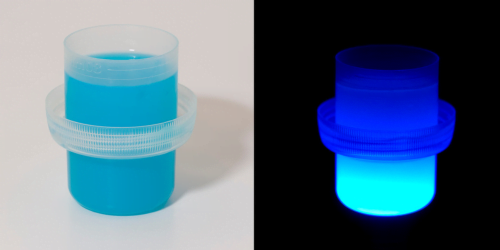Optical Brightener
Optical brighteners, also known as optical brightening agents (OBAs), fluorescent whitening agents (FWAs), or fluorescent brightening agents (FBAs), are chemical compounds used in various industries, especially in the production of textiles, paper, detergents, and plastics. Their primary function is to enhance the perceived whiteness or brightness of materials by absorbing ultraviolet light and re-emitting it as visible blue light.
How Optical Brighteners Work:
The optical brighteners work on the principle of fluorescence. When exposed to ultraviolet (UV) light, which is present in daylight or under artificial UV light sources, these brightening agents absorb the UV radiation and become excited. As they return to their ground state from the excited state, they emit visible blue light. This emitted blue light mixes with the natural light reflected by the material, making it appear brighter and whiter to the human eye.
What are the different terms for optical brighteners?
Optical Brighteners: This is the general term used to describe these compounds, highlighting their ability to enhance the brightness and whiteness of materials.
Fluorescent Brightening Agents (FBAs): Often used in the textile industry, FBAs are substances that fluoresce, emitting visible light when exposed to ultraviolet (UV) or blue light.
Fluorescent Whitening Agents (FWAs): This term is commonly used in the paper industry to refer to optical brighteners used to make paper products appear brighter and whiter.
Optical Brightening Agents (OBAs): Another general term similar to “optical brighteners,” used to indicate their function of brightening materials optically.
Whitening Agents: In some cases, optical brighteners may be simply referred to as whitening agents, highlighting their ability to improve the whiteness of treated materials.
UV Absorbers: While not strictly synonymous, some UV absorbers can also impart a brightening effect by converting UV radiation into visible light.
Fluorescent Dyes: Optical brighteners are sometimes classified as fluorescent dyes due to their ability to absorb and re-emit light in the visible spectrum.
Applications of Optical Brighteners:
Textiles: Optical brighteners are widely used in the textile industry to enhance the whiteness of fabrics and improve their visual appeal. They are often added to laundry detergents to maintain the brightness of white clothes over multiple wash cycles.
Paper: In the paper industry, optical brighteners are employed to make paper products, such as writing paper and printing paper, appear brighter and more visually appealing.
Detergents: Laundry detergents and washing powders often contain optical brighteners to give a “whiter-than-white” appearance to washed clothes.
Plastics: Optical brighteners are used in plastic manufacturing to enhance the appearance of plastic products, making them look more attractive and vibrant.
Important Considerations:
Light Fastness: Optical brighteners can degrade over time when exposed to sunlight or other sources of UV radiation, leading to a decrease in the brightening effect. Therefore, their light fastness is an essential consideration when choosing these agents for specific applications.
Substrate Compatibility: The selection of the appropriate optical brightener depends on the substrate to be treated (e.g., textiles, paper, plastics) and its compatibility with the brightening agent.
Environmental Impact: Some optical brighteners may raise environmental concerns, especially when they are not easily biodegradable and can persist in water bodies after being washed off from treated materials. As a result, there is an increasing focus on developing more eco-friendly alternatives.
What are the end uses of optical brighteners?
Optical brighteners find a wide range of end uses in various industries due to their ability to enhance the perceived brightness and whiteness of materials. Some of the primary end uses of optical brighteners include:
• Textiles
• Paper and Pulp
• Laundry Detergents
• Soaps and Personal Care Products
• Plastics
• Printing Inks
• Coatings and Paints
• Security Printing
• Film and Photography


